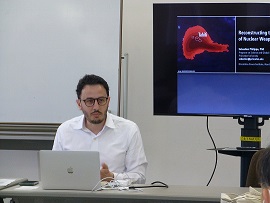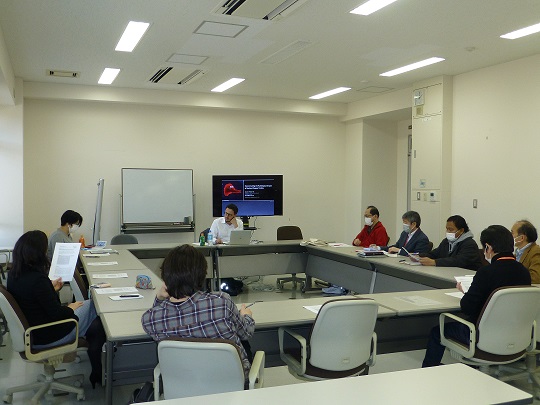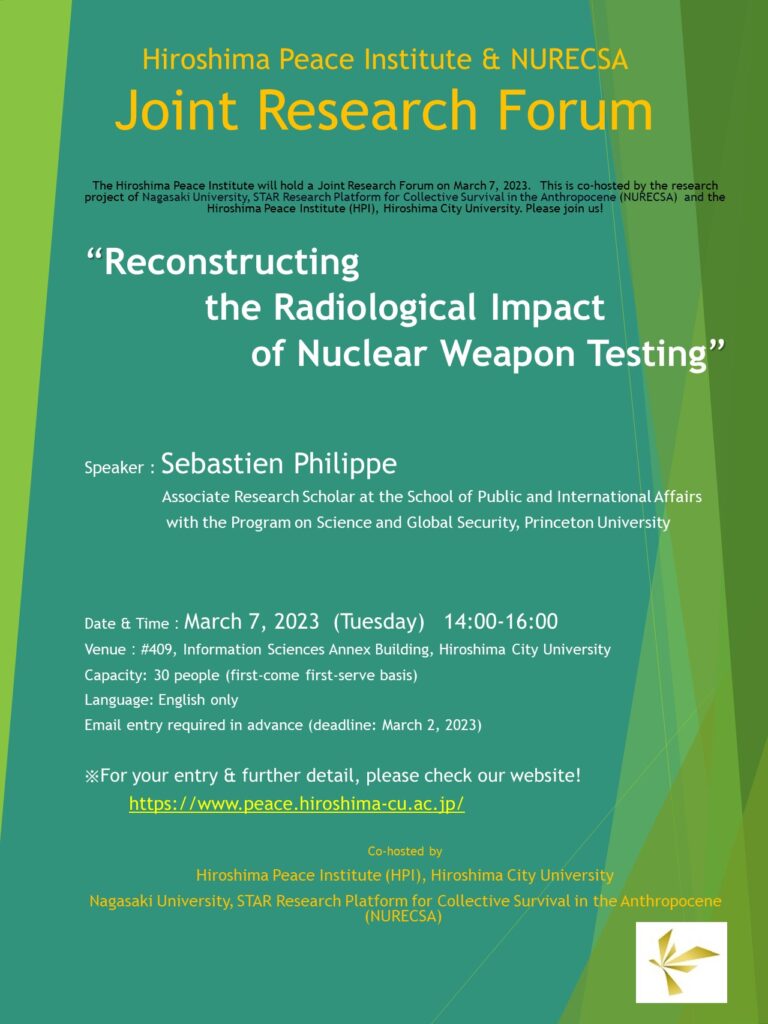By Sebastien Philippe, Associate Research Scholar, Program on Science and Global Security, Princeton University
The Hiroshima Peace Institute held the Joint Research Forum co-hosted by the research project of Nagasaki University, STAR Research Platform for Collective Survival in the Anthropocene (NURECSA) as follows:


1. Date and Time
March 7, 2023 (Tue.) 14:00-16:00
2. Venue
Room 409, Information Sciences Annex Building, Hiroshima City University
3-4-1, Ozuka-Higashi, Asaminami-ku, Hiroshima
3. Capacity
30 people (first-come first-serve basis)
4. Language
English only
5. Abstract of the Forum
Over five hundred atmospheric nuclear tests were conducted between 1945 and 1980 to support the development of nuclear weapons worldwide, often exposing local populations to radioactive fallout and leading to possible adverse health effects, including increased risks of developing radiation-induced cancers. While the health effects of such exposures have been recognized, their full extent is still disputed. Many atmospheric tests were conducted amid poor meteorological conditions and led to significant fallout hundreds of miles away. Today, there is still no global map of radioactive contamination, exposed communities, and impacted ecosystems due to fallout from nuclear weapon testing. This talk discusses how combining current understanding of nuclear weapon explosions, the simulation of radioactive fallout using modern computational tools, and archival research permits an independent re-evaluation of the radiological consequences of past nuclear tests with potentially significant implications for compensation and remediation. As an example, it presents the results of a study on the radiological consequences of French atmospheric nuclear testing in the Pacific, involving extensive simulations of radioactive fallout. The study found that 90% of the French Polynesian population living near the test site at the time of atmospheric testing could have received doses greater than current compensation threshold under French law. These results led French President Emmanuel Macron to acknowledge that France had a debt towards the Polynesian population, to call for the improvement of victims’ compensation, and for the opening of “all” related government archives.
6. Profile of Lecturer
Sebastien Philippe is a scientist and research scholar with Princeton University's Program on Science and Global Security, part of the School of Public and International Affairs. His research, at the intersection of science, technology, and policy, focuses on nuclear non-proliferation, arms control, and disarmament issues. He is the co-author of Toxique (French University Press, 2021), an investigation into the radiological and environmental impact of French nuclear testing in the Pacific, which was a Finalist for the 2021 Albert Londres Prize (the French equivalent of the Pulitzer Prize) and won a 2022 Sigma Award for best data journalism in the world. Philippe holds a PhD (2018) in Mechanical and Aerospace Engineering from Princeton, was a Stanton nuclear security postdoctoral fellow at the Harvard Kennedy School of Government, and has served as a nuclear weapon system safety engineer in France's Ministry of Armed Forces.
※This Joint Forum was co-hosted by the Hiroshima Peace Institute (HPI), Hiroshima City University and the research project of Nagasaki University, STAR Research Platform for Collective Survival in the Anthropocene (NURECSA).

